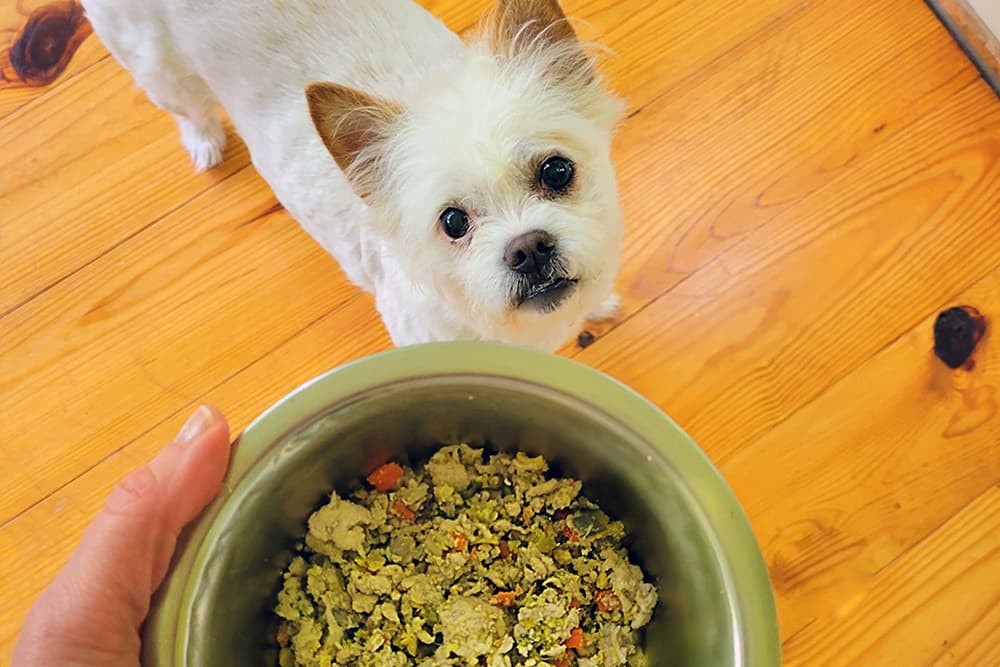Administering Injectable Medication To Your Dog
Published on July 11, 2011
Some medications can only be administered by injection, and while putting a needle in your dog’s skin can be a bit intimidating, here’s a how-to guide that will help ease your worries, so you can help your dog feel better — without injuring him or yourself.
Why Does My Dog Need Injectable Medication?
Certain medications, such as insulin, can only be administered by injection. Most injectable medications given at home are done subcutaneously (known as an SC or SQ injection), which means the medicine is injected directly under the skin. Others can be injected into a vein (intravenous, or IV injection) or into a muscle (intramuscular, or IM injection). If you’re not sure which type of injection you’re supposed to give, contact your veterinarian, as complications can arise if you accidentally give a medication intravenously instead of subcutaneously, for example.
Getting Started
Before you start, ask your veterinary health care team for advice and training on how to give the medicine, and tips on preventing injury (to you and your dog). If you still feel uncomfortable or need additional training sessions, don’t be afraid to ask!
Here are a few things to consider:
- Be sure you can handle your dog without being injured. This may not be an issue if your dog is very relaxed and is used to being handled. However, if you have problems trying to trim nails or perform other procedures on your dog, you may need help with the injections. Your veterinary care team can offer advice on restraining your dog for the injections. In some cases, you may need another person to help hold your dog so you can safely give the injection.
- Don’t be afraid to ask questions. Your team of veterinary professionals will be glad to answer any questions you may have about safely administering injections to your dog.
- Record your dog’s medication schedule on the calendar. Include the date and time that the medication needs to be administered. This will prevent you from missing a dose and help you remember when treatment is completed.
- If you can’t do it, ask about other options. Giving injections to a dog requires skill, patience, and confidence. If you aren’t comfortable administering the medicine, ask your veterinary team if the injections can be done at their office. This can be a practical option for short-term medication, but if your dog is on long-term therapy (such as insulin), this may require a prolonged time commitment.
Basic Equipment
The syringe is the clear cylinder that holds the medication to be injected. (It’s usually made of plastic.) The needle is the sharp, metal tip that’s injected into the skin. The plunger is a stem that moves inside the syringe. Pull the plunger backward to fill the syringe and push it forward to empty the syringe. A new needle, plunger, and syringe are sterile until they’re opened, as is the medicine itself. It’s important to handle these items properly to avoid contaminating them. Your veterinary care team will show you how to open a syringe and draw up the medication without compromising sterility. Be sure to use a new syringe, plunger, and needle for each injection, since reusing syringes and needles can cause infection. Plus, a used needle is dull and therefore more painful for your dog than a new needle.
Proper Restraint
A small dog may be happy lying or sitting on your lap while you administer an injection. For a larger dog, you may need to sit in a chair next to the dog or sit on the floor with the dog. Some dogs do better on a smooth surface, such as a table. Placing a small dog on top of the washing machine can simulate the smooth metal table at the veterinarian’s office, encouraging the dog to remain still during the procedure. You may find it easier still if you have a partner to help: One person can hold the dog while the other gives the injection.
Giving a Subcutaneous Injection
Your veterinary care team will show you how to administer an injection before you have to do it alone at home, but here are steps to keep in mind:
- Load the syringe with medication and set it close by.
- Find an area of loose skin. The skin over the middle of the back or just behind the shoulders generally works well. If the injection will be given frequently, as with insulin, try not to use the same location each time.
- Gently pinch the skin between your thumb and forefinger. Pull the loose skin gently upward and look for a small indentation of skin between your fingers.
- Pick up the syringe with your other hand and insert the sterile needle directly into the indentation. Keep the needle parallel to the surface of the skin on the back. If you angle the needle too much, you may enter a muscle, go through the skin to the opposite side, or stick your own finger.
- Once the needle has been inserted, pull back on the plunger only. If you see blood, remove the needle and try a different location. If there’s no blood, push the plunger forward to empty the syringe.
- When the syringe is empty, remove the needle, backing out along the same path that was used to enter the skin.
- Check the area for bleeding or leakage of medication. If this is detected, use a clean facial tissue or cotton ball to gently apply pressure to the area for a minute or so. If there’s no bleeding or leakage of medication, release the dog after giving him a big hug for being a good patient!
- Be sure to dispose of used needles and syringes properly, based on your veterinarian’s directions.
Giving an Intramuscular Injection
There are a few precise areas on the body that are best for intramuscular injections. Your veterinary care team will show you how to find an appropriate injection site and administer the medication before you have to try it alone at home, but if you forget anything, here are steps to keep in mind:
- Load the syringe with medication and set it close by.
- Find the injection site, using the techniques your veterinarian demonstrated for you. If the injection will be given frequently, try to alternate injection sites.
- Hold the syringe in one hand and insert the sterile needle directly through the skin and into the underlying muscle. The angle of the needle should be between 45° and 90°, depending on the injection site. If your angle is too shallow, you may not inject deeply enough to enter a muscle.
- Once the needle has been inserted, pull back on the plunger only. If you see blood, remove the needle and try a different location. If not, push the plunger forward to empty the syringe.
- When the syringe is empty, remove the needle, backing out along the same path that was used to enter the skin.
- Check the area for bleeding or leakage of medication. If this is detected, use a clean facial tissue or cotton ball to gently apply pressure to the area for a minute or so. If there is no bleeding or leakage of medication, release the dog after giving him a big hug for being a good patient!
- Be sure to dispose of used needles and syringes properly, based on your veterinarian’s directions.
This article has been reviewed by a Veterinarian.





